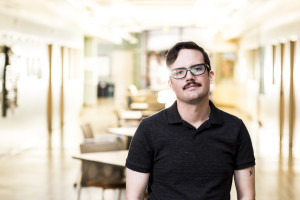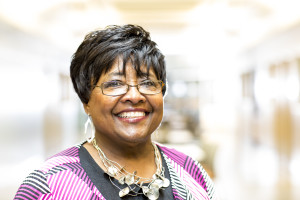body #article .embed-container {
padding-bottom: 45%;
}
.embed-container {
width: 80%;
margin: auto;
}
By ![]()
For youth who engage in violence and underage alcohol use, the ramifications can create a ripple effect for years to come. Physical and emotional problems, addiction and reduced access to education and employment may all result from behavioral choices made during a young person’s formative years.
The University of Washington School of Social Work is working to help create positive outcomes for at-risk youth through a prevention program called Communities That Care (CTC). Since its implementation in the early 1990s, Communities That Care has benefited more than 100 U.S. communities.
Changing the future, one student at a time

Stephan Blount, a second-year master’s candidate at the School of Social Work, is helping implement CTC principles through Communities in Action, a program where Seattle residents come together to increase protective factors and reduce risk factors to promote healthy child development.
Along with fellow UW master’s candidates Kelley Pascoe and Eric Agyemang, Blount teaches students from schools in southeast and central Seattle.
“We’re working to deliver life skills training to middle schoolers,” Blount explains. “Our part began after a group of agencies came together to address things in their communities affecting their youth.”
Communities in Action began in 2013, when more than 2,300 students in grades six, eight, 10 and 12 responded to a survey about the challenges in their daily lives. Similar to data from Communities That Care, the survey showed that the students faced bullying, fighting, drug use and depression.

Fostering healthy behaviors
A critical component of the Communities That Care program is that it must develop organically with the help of its stakeholders, rather than be imposed on them by an outside agency that thinks it knows best what a given group needs or wants.

In the end, they determined that it was critical to help youth resist the lures of underage drinking and smoking — behaviors that put them at risk for delinquency — and instead opt to stay in school and choose peaceful behavior over violence.
Because the CTC program is evidence-based and draws on the strengths of the community it serves, Blount says he’s confident the program will change the outcomes of the sixth-graders he works with.
“I’m just implementing what the stakeholders have chosen,” he says. “They’re the experts on what they need.”
An investment in the community
It’s clear that the model works. In the years since Communities That Care was first implemented, numerous scientific studies have shown how effective it is. Data from one CTC model shows that youth who participated in the program were 25 to 37 percent less likely to have health and behavior problems like smoking, drug and alcohol use, or delinquency.
In addition to improving lives, the program also offers significant cost savings: For every dollar invested in CTC, $5.30 is returned in the form of lower substance abuse and delinquency costs.
Alongside the valuable partnerships with community members, much of the success of Communities That Care and Communities in Action is due to student support from the Excellence in Social Impact Scholarship. Blount, Agyemang and Pascoe all received scholarships from the scholarship fund, which was established in 2016 to help reduce the debt load of social work students.
For Blount, this financial support has meant that he can focus time and energy on his studies and the young students he works with. Even more important, it has helped him explore the career he knows he was meant to pursue. “I have always been set on doing some sort of human services or social work,” he says. “I don’t see myself doing anything else.”


